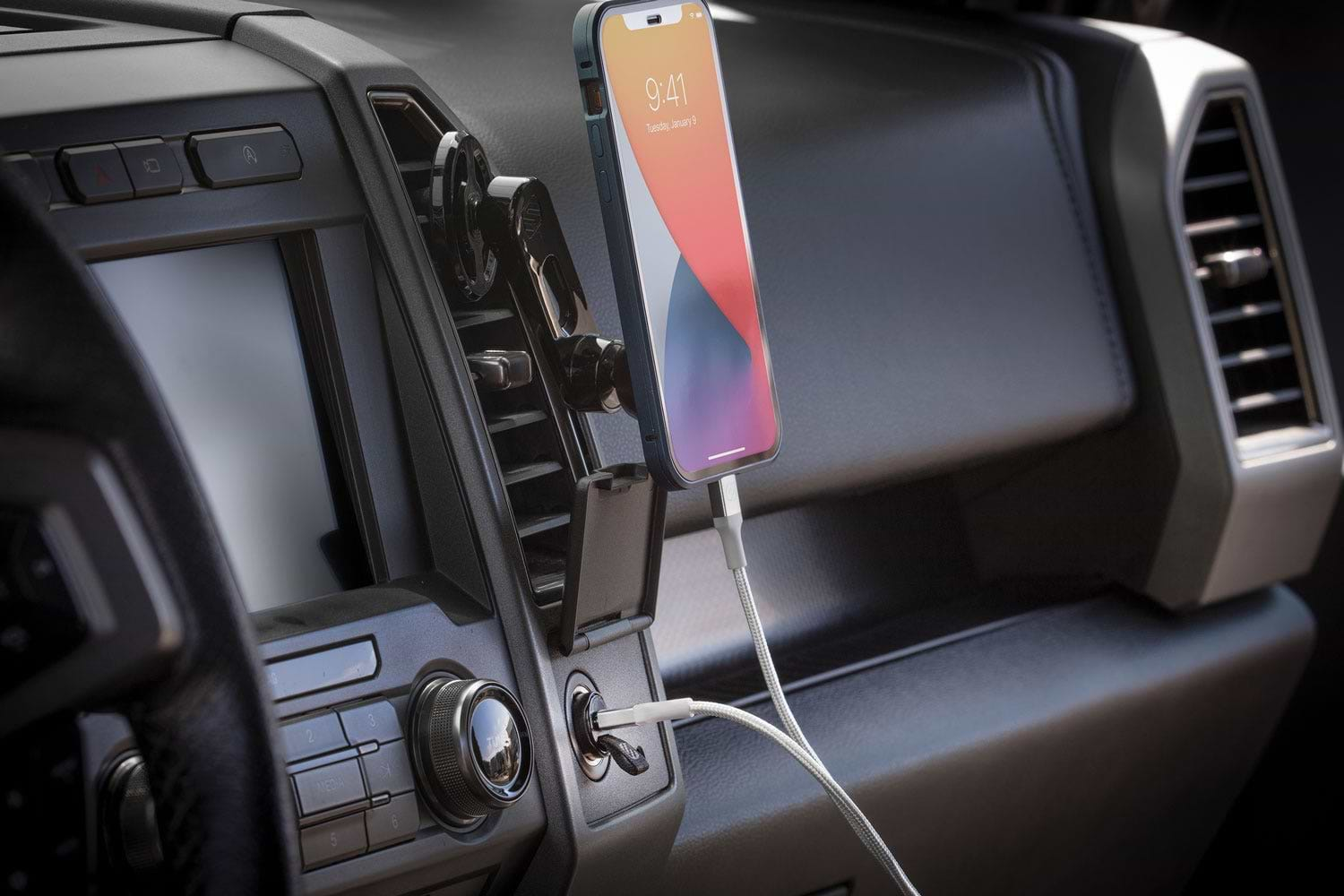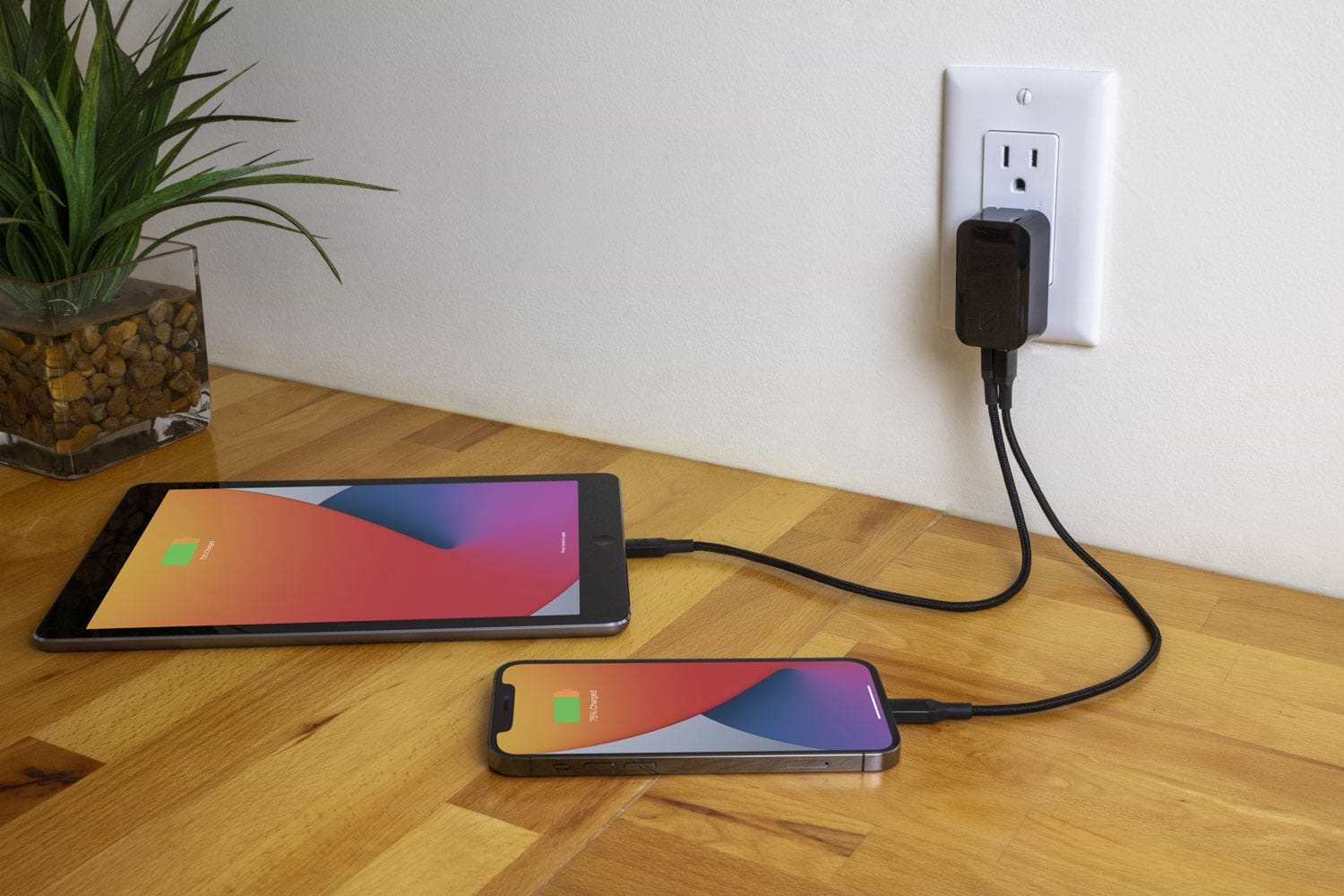iPhone Charging Speed in Low Battery Mode

Low battery mode is a feature that many iPhone users are familiar with. It is a handy option that can help prolong battery life when your device is about to die. But have you ever wondered how low battery mode affects the charging speed of your iPhone?
In this article, we will explore the relationship between low battery mode and charging speed, as well as provide tips on how to optimize your iPhone charging speed.
Understanding Low Battery Mode
Before we delve into the impact of low battery mode on charging speed, let's first understand what low battery mode is. Low battery mode is a power-saving feature on iPhones that reduces power consumption by disabling certain background processes and visual effects. When enabled, low battery mode can significantly extend the battery life of your device.
What Is Low Battery Mode?
Low battery mode is a feature that automatically activates when your iPhone's battery drops to a certain percentage, typically around 20%. It modifies various settings to minimize battery usage, such as reducing the brightness of the display, disabling background app refresh, and limiting mail fetching. These optimizations help your iPhone conserve power and stay operational even when the battery is running low.
How to Enable Low Battery Mode on iPhone
To enable low battery mode on your iPhone, simply go to the Settings app and tap on "Battery." You will find the option to enable low battery mode when the battery level reaches a certain percentage. Alternatively, you can also enable low battery mode through the Control Center by swiping down from the top-right corner of the screen and tapping on the battery icon.
Now that we understand the basics of low battery mode, let's explore some additional features and benefits it offers. One notable feature of low battery mode is the ability to optimize system performance. When your iPhone is in low battery mode, it not only conserves power but also prioritizes essential tasks, ensuring that your device runs smoothly even with limited battery capacity.
Another advantage of low battery mode is its impact on charging speed. When your iPhone is in low battery mode, it reduces power consumption, allowing your device to charge at a faster rate. This can be particularly useful when you are in a hurry and need to quickly charge your iPhone before heading out.
In addition to optimizing performance and improving charging speed, low battery mode also provides a more streamlined user experience. By disabling unnecessary background processes and visual effects, low battery mode helps reduce distractions and allows you to focus on the tasks at hand. Whether you're working on an important project or enjoying a movie on your iPhone, low battery mode ensures that you can make the most of your device's battery life without compromising on functionality.
The Science Behind iPhone Charging
Now that we understand what low battery mode is, let's explore how it affects the charging speed of your iPhone. To comprehend this, we need to look at the two main factors that contribute to the overall charging speed: the hardware, specifically the lithium-ion batteries used in iPhones, and the software optimization implemented by Apple.
The Role of Lithium-Ion Batteries
Lithium-ion batteries are the primary source of power for iPhones. These batteries have the advantage of being lightweight and capable of holding a high charge density. However, they also have limitations when it comes to charging speed. When the battery is nearly depleted, the charging speed slows down to protect the battery from potential damage. This behavior is not specific to low battery mode but applies to both normal and low battery mode charging.
Let's delve a bit deeper into the inner workings of lithium-ion batteries. These batteries consist of two electrodes, a positive electrode (cathode) and a negative electrode (anode), separated by a thin layer called the electrolyte. During charging, the lithium ions move from the cathode to the anode through the electrolyte, storing energy. When discharging, the process reverses, and the lithium ions move from the anode to the cathode, releasing energy to power the device. This intricate dance of ions is what allows your iPhone to function.
Now, you might be wondering why the charging speed slows down when the battery is nearly depleted. Well, this is due to a phenomenon called "voltage depression" or "voltage sag." As the battery discharges, the voltage drops, and when it reaches a certain threshold, the charging speed is reduced to prevent overcharging and potential damage to the battery. This protective mechanism ensures the longevity and safety of your iPhone's battery, even in low battery mode.
The Impact of Software on Charging Speed
Apple's iOS software plays a critical role in managing the charging speed of iPhones. The software contains intelligent algorithms that regulate the charging process to ensure optimal battery health and safety. In low battery mode, the software may further limit the charging speed to maximize power conservation. While this may result in slower charging, it helps prolong the battery life and ensures a more consistent and reliable user experience in the long run.
But how does the software achieve this fine balance between charging speed and battery health? One of the key strategies employed by Apple is a technique called "trickle charging." Trickle charging refers to the process of gradually reducing the charging speed as the battery approaches its full capacity. This slow and steady approach prevents the battery from getting stressed and helps maintain its overall health.
In addition to trickle charging, Apple's software also monitors the temperature of the battery during charging. If the battery gets too hot, the software may temporarily reduce the charging speed to prevent overheating and potential damage. This temperature management feature ensures that your iPhone remains safe and reliable, even during intensive charging sessions.
Furthermore, Apple continuously fine-tunes and improves the charging algorithms through software updates. These updates not only introduce new features but also optimize the charging process, making it more efficient and effective. So, when you see that software update notification on your iPhone, it's not just about new emojis or bug fixes; it's also about enhancing the charging performance and battery longevity of your device.
Comparing Charging Speeds
Let's now compare the charging speeds between normal mode and low battery mode to determine if there is a noticeable difference.
Normal Mode vs Low Battery Mode Charging
When charging your iPhone in normal mode, the charging process is typically faster compared to low battery mode. In normal mode, there are no restrictions placed on the charging speed. However, when your iPhone is in low battery mode, the software may prioritize power conservation over faster charging, resulting in slightly longer charging times. This trade-off is intentional to ensure the battery lasts as long as possible when it is running low.
Factors Affecting Charging Speed
Various factors can affect the charging speed of your iPhone, regardless of whether it is in normal mode or low battery mode. Some key factors to consider include the wattage of the power adapter you are using, the quality of the charging cable, and the ambient temperature. Using a higher wattage charger and a certified cable can help expedite the charging process. Additionally, charging your iPhone in a cool environment can prevent the device from overheating and further optimize the charging speed.
Another factor that can impact charging speed is the battery health of your iPhone. Over time, batteries naturally degrade, which can affect their ability to charge at the same speed as when they were new. If you notice that your iPhone is taking longer to charge than it used to, it might be a sign that the battery health is declining. In such cases, it may be worth considering a battery replacement to restore optimal charging speeds.
Furthermore, the charging speed can also be influenced by the number of apps running in the background. Running multiple resource-intensive apps while charging your iPhone can divert power away from the charging process, resulting in slower charging speeds. To maximize the charging speed, it is advisable to close unnecessary apps and limit background activity while your device is connected to the charger.
Tips to Optimize iPhone Charging Speed
Now that we have an understanding of how low battery mode impacts charging speed, let's explore some tips to optimize your iPhone charging speed:
Best Practices for Faster Charging
- Use a power adapter with a higher wattage rating, such as the 18W USB-C adapter.
- Invest in a high-quality charging cable that supports fast charging.
- Keep your iPhone and the charging cable clean and free from dust and debris.
- Avoid using your iPhone while it is charging to maximize the charging speed.
- Charge your iPhone in a cool environment to prevent overheating.
Avoiding Common Charging Mistakes
- Avoid using low-quality, uncertified chargers and cables as they may damage your iPhone's battery.
- Do not leave your iPhone plugged in for extended periods once it reaches 100% charge, as this can potentially shorten the battery lifespan.
- Remove any protective cases or covers while charging, as they can trap heat and slow down the charging process.
While following the best practices mentioned above will undoubtedly help optimize your iPhone charging speed, there are a few additional factors to consider. One important aspect is the charging port on your iPhone. Over time, the charging port can accumulate dirt, lint, and debris, which can hinder the charging process. To ensure optimal charging speed, it's a good idea to regularly clean the charging port using a soft, dry toothbrush or a can of compressed air.
Another factor that can affect charging speed is the battery health of your iPhone. As your iPhone's battery ages, its capacity to hold a charge may decrease, resulting in slower charging times. To check the battery health of your iPhone, go to Settings > Battery > Battery Health. If the maximum capacity is significantly lower than when the battery was new, it may be worth considering a battery replacement to restore optimal charging speed.


Debunking Myths About iPhone Charging
There is a lot of misinformation surrounding iPhone charging. Let's debunk some commonly held myths:
Does Low Battery Mode Slow Down Charging?
Contrary to popular belief, enabling low battery mode does not directly slow down the charging speed of your iPhone. The decision to slow down the charging speed is primarily dependent on the software's power management algorithms and the health state of the battery.
Can Overcharging Damage Your iPhone Battery?
Modern iPhones are equipped with intelligent charging circuits that prevent overcharging. Once your iPhone reaches 100% charge, it stops charging to protect the battery from overcharging. Therefore, you do not need to worry about damaging your iPhone battery by leaving it plugged in overnight or for extended periods.
Conclusion
In conclusion, while low battery mode may slightly slow down the charging speed of your iPhone, it plays a crucial role in extending your battery life when it's running low. By following the tips mentioned in this article, you can optimize your iPhone charging speed and ensure a longer battery lifespan. Remember to use certified charging accessories, charge your iPhone in a cool environment, and practice good charging habits to maximize your charging speed and battery longevity.